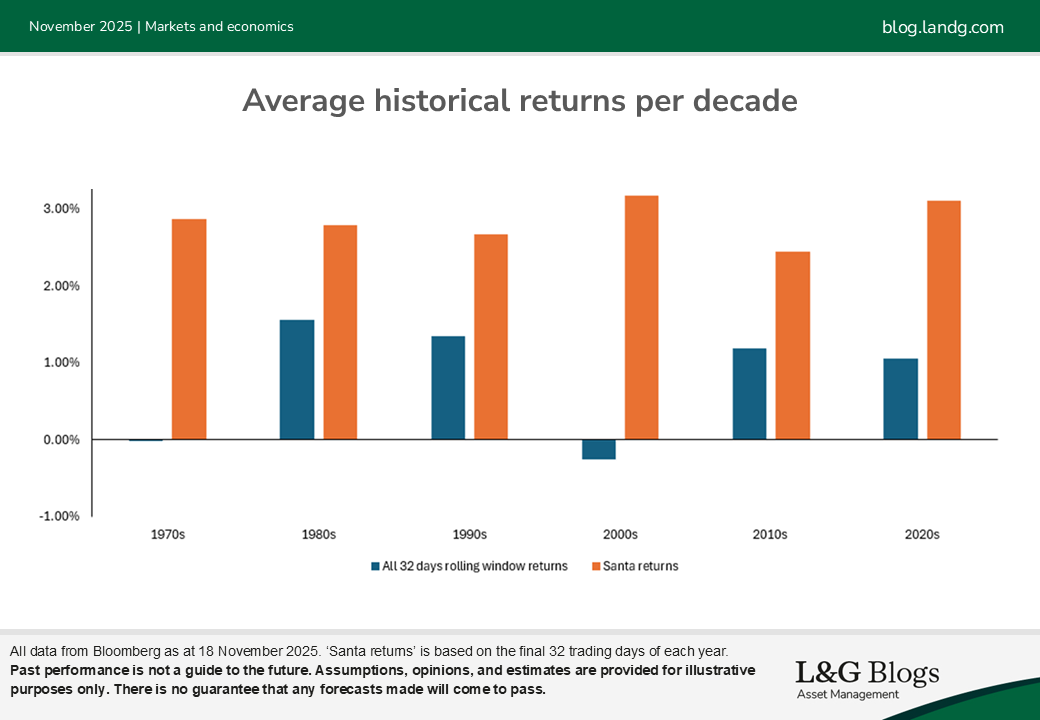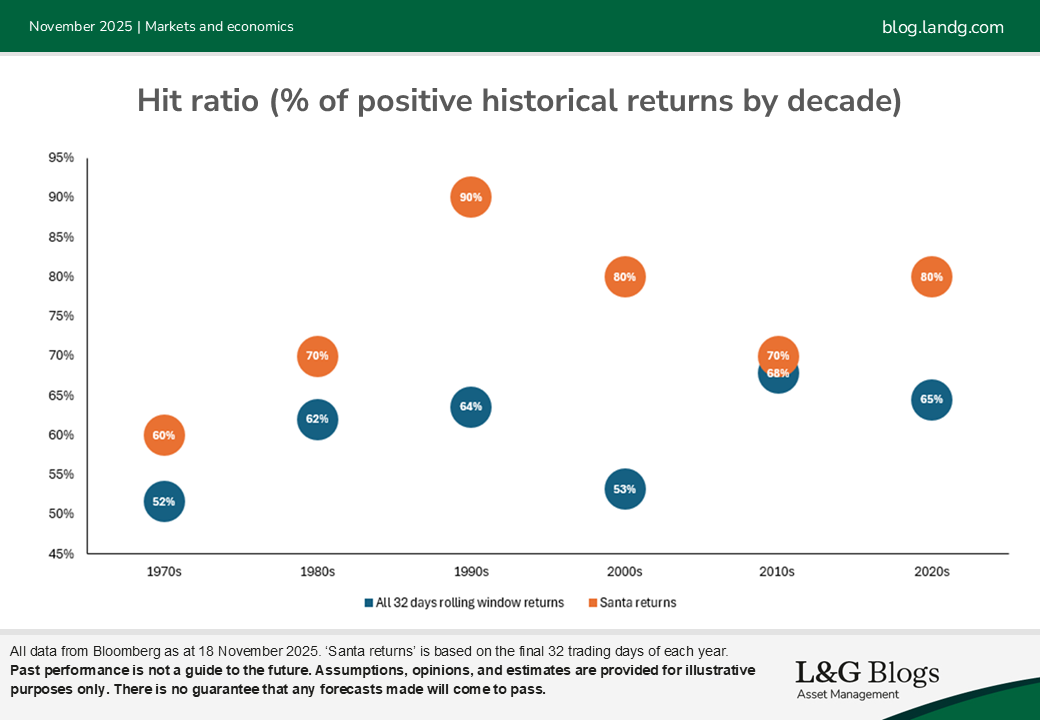Disclaimer: Views in this blog do not promote, and are not directly connected to any L&G product or service. Views are from a range of L&G investment professionals, may be specific to an author’s particular investment region or desk, and do not necessarily reflect the views of L&G. For investment professionals only.
Is Santa Claus for real?
With equity market valuations appearing stretched, we ask whether market gifts of Christmases past could still be in the post this year.

As we approach mid-November, investors often ask whether the so-called ‘Santa rally’ is more than merely market folklore. The Santa rally refers to periods in the past when equities have moved higher both in the run-up to and throughout the festive season, often on low market volumes given the time of year with many market makers away from their desks.
Gifts of Christmas past
Our analysis of historical data suggests that there could be substance to the Santa saying. Over the past 55 years, the S&P 500 has delivered positive returns from November 15 to year-end in 75% of cases, with an average gain of about 2%. That’s meaningfully higher than the 60% hit rate and 0.8% average return for any random 32-day window during the year, based on historical data drawn from the same long-term period.
Bah humbug?
However, while historical data shows a tendency for markets to rally in the final six weeks of the year, it’s inevitable, by structure, that one such period will appear strongest, on average, across years. Looking backwards, we can impute meaning to that strength, but this could simply be a case of being “fooled by randomness”. In other words, the observed pattern does not necessarily imply causality and may reflect overfitting to historical data rather than a true seasonal effect.
What if ‘Mr Market’ has been ‘good’?
What’s more, the positive market seasonality appears to have been even stronger after a good year. When returns from January to mid-November were positive, there was a year-end rally in 85% of cases, with an average gain of 2.9%. In years where returns exceeded 15% by mid-November, the average historic gain was closer to 3.9%. Conversely, after a negative year, the markets rallied in just 47% of cases.
Do gifts need to be decent value?
The statistical significance of whether the current level of market valuations could influence this historical seasonal tendency is harder to establish given limited observations. However, our analysis of the available evidence suggests that high valuations have not historically been sufficient to undermine the end-of-year rally, meaning that seasonality has typically dominated. We also believe that performance chasing and window dressing is likely play a role, especially in strong years.
Will Santa fall back with a bump?
Interestingly, an exceptional year-end (top 20th percentile) has not historically signalled potential market weakness ahead. January returns following such periods were positive 73% of the time, slightly better than average, although differences were not statistically significant. This aligns with studies suggesting that the absence of a Santa Claus rally – not its presence – has historically been associated with weaker January performance.
Who wants to miss out on Santa?
While seasonality is clearly never guaranteed, history suggests that mid-November to year-end does tends to be a favourable period for equities, particularly after strong years. What’s more, this historical data analysis gives us reason to reconsider our cautious risk position. Although we still believe too much optimism is priced into current market valuations, we are minded not to bet against a return of Santa over the coming six weeks.


Recommended content for you
Learn more about our business
We are one of the world's largest asset managers, with capabilities across asset classes to meet our clients' objectives and a longstanding commitment to responsible investing.


